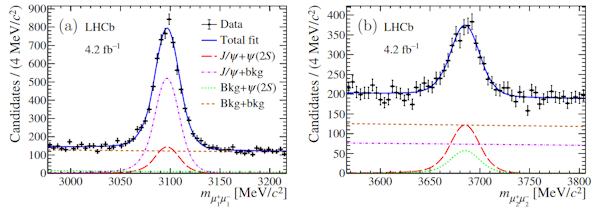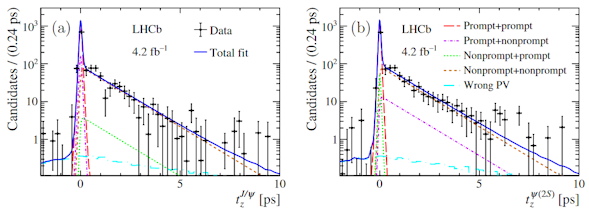The LHCb collaboration submitted its 700th publication! The paper reports the integrated and differential cross-section measurements of associated J/ψ and ψ(2S) production in proton-proton collisions at 13TeV, the measurement is performed for the first time at hadron collider.

The images above show the di-muon mass accumulated around J/ψ (left) and ψ(2S) masses. During analysis LHCb physicists faced several challenges, examples are listed in the following sentences. In pp collisions, J/ψ or ψ(2S) mesons can be produced either directly from hard collisions of quarks and gluons (partons), through the feed-down of excited charmonium states, or via decays of beauty hadrons. The J/ψ or ψ(2S) mesons from the first two sources are referred as prompt, while those from the last source as nonprompt. The separation between these different categories can be seen in the images below. Since the mechanism of J/ψ-ψ(2S) associated production is unknown, special selection criteria have been developed so that the efficiency can be evalueted as a function of meson kinematics.

On the theoretical side, the J/ψ-ψ(2S) pair can be produced via single-parton collisions, called therefore single-parton scattering, but also via collision of two partons from each proton (double-parton scattering). Comparison of the J/ψ-ψ(2S) results with the analysis of J/ψ pair production allowed a significant double-parton scattering contribution to be confirmed.
The reported results provide important information to improve QCD calculations in the non-perturbative regime. More details, numerical values and differential distributions can be found in the 700th paper.
